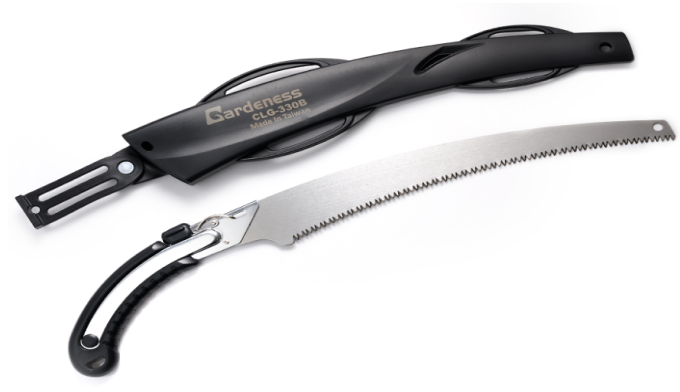
Why Are Garden Hand Pruning Saws Curved?
Large branches can easily be sawed with garden hand pruning saws. The blades of pruning saws with curves are perfect for catching onto branches that are difficult to reach. Well, the ideal blades for heavy-duty cutting are curved, not straight. The curve gives your cut more durability and makes the wood feel like bread. Smaller branches can also be chopped with pruning saws with curved blades. However, because our bodies aren't accustomed to the shape, cutting large branches may be a little awkward when using curved blades. Make deep, gratifying cuts with a curved pruning saw to rip through any wood that is in your path. For precise results, the tough razor-tooth blade maintains stability during powerful pulls.
Curved Garden Hand Pruning Saws
With a curved saw blade, you can cut a branch without worrying about it slipping away. Excellent for when you're in a tight place and need to cut a branch. The curved saws are also ideal for general pruning activities in your yard.
Prominent Features of our Hand Pruning Saw:
- High carbon steel for durability
- Sharp Tri-Cut teeth
- Cuts on both push & pull stroke
- Comfortable timber handle
- Lifetime guarantee
How to Sharpen a Hand Pruning Saw
- Use a wire brush to clean the blades of any dirt or tree debris. For any greasy accumulation on the blades, use a rag and a degreaser substance.
- If at all possible, take the blades off the pruner pole to make the pole more useful. Sometimes the pole's pole ends unscrew from the head with the blades.
- With the serrated edge facing up, clamp the blade in a table vise.
- 3. Insert a sharpening rod into the space created by two adjacent teeth. To remove the metal and sharpen the blade, advance the rod.
- To generate a burr of coiled metal filings on the rear of the blade, repeat this procedure three to six more times. Never move the sharpening rod backward or forward while sawing between the saw teeth. Between each saw tooth, repeat this operation.
- To remove the burrs from the blade's backside, rub the sharpening rod or a flat file against it. One or two passes should be sufficient to remove the burrs.
- To prevent rust on the bare metal, put lubricating oil or another comparable lubricant on the blade edges.
Understand Your Pruning Tools
If you are aware of the cutting capability and intended use of each instrument, selecting the appropriate pruning tool for your project will be simple. Don't go beyond the advised cutting capacity to protect yourself, your instruments, and your plants. Selecting tools with clean, sharp blades will aid in your plants' speedy recovery. Invest in high-quality instruments that have a reputation for being durable and sharp for a very long time. Get highly durable and good quality garden pruning tools at Gardeness with free shipment.